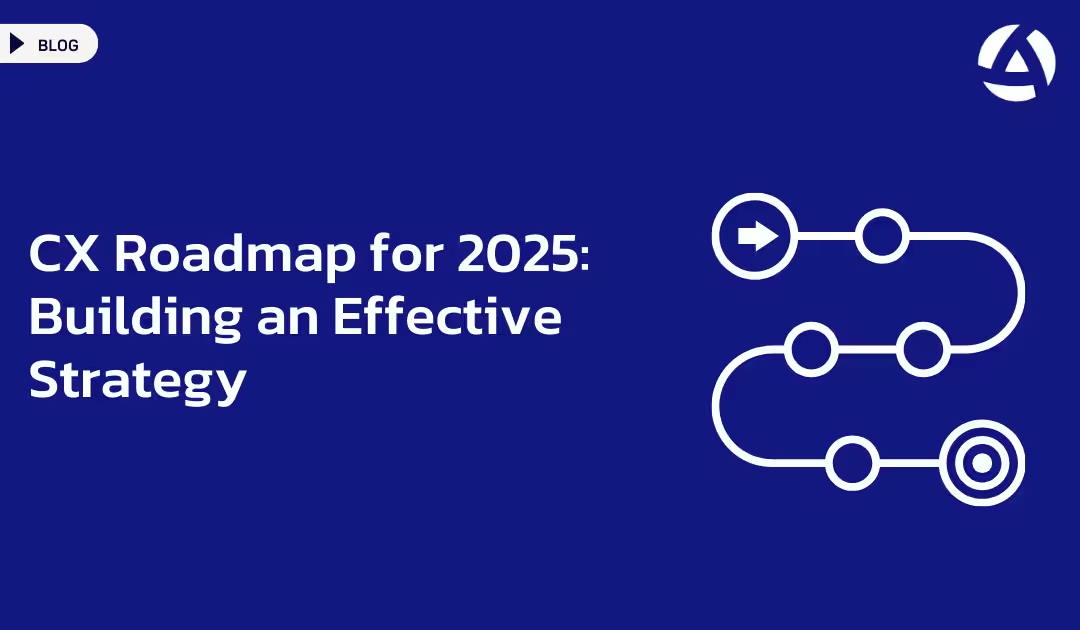Creating a customer experience roadmap for 2025 is all about strategically planning how to deliver seamless, personalized, and impactful interactions that engage and delight customers. This roadmap will guide your team, set clear goals, and outline actionable steps to enhance customer satisfaction and loyalty. Here are key elements to consider for your 2025 customer experience (CX) roadmap to stay competitive and build lasting relationships.
1. Set Clear Objectives Aligned with Customer Expectations
Before designing any initiatives, start by outlining clear, measurable objectives that align with your customers’ expectations. These objectives may include:
- Improving response times across all support channels
- Enhancing personalization in customer interactions
- Increasing overall customer satisfaction scores
Setting clear goals helps your team stay focused on specific outcomes and track the success of your CX strategies effectively.
2. Identify Key Customer Touchpoints
Mapping out the journey your customers take with your brand is essential. By pinpointing key touchpoints, you can ensure that each one offers value and encourages customer loyalty. Focus on:
- Customer service interactions (e.g., support calls, chats)
- Purchase and post-purchase processes
- Feedback loops (surveys, reviews, etc.)
This mapping allows you to uncover pain points and make informed improvements at each stage of the customer journey.
3. Integrate Real-Time Data and Analytics
Real-time data is essential for understanding your customers’ needs and preferences. With access to data-driven insights, you can adjust strategies based on up-to-date trends, behaviors, and sentiments. To leverage data in your CX roadmap:
- Use AI-driven analytics to capture and analyze customer sentiment
- Implement dashboards that provide live metrics on customer interactions
- Regularly review data to adapt your strategies based on changing behaviors
Leveraging data enables you to make more accurate, customer-focused decisions and respond proactively to emerging trends.
4. Empower Your Teams with Training and Tools
CX is more than just processes; it’s about people. Empower your team by providing them with the training and tools they need to deliver exceptional customer experiences. Consider:
- Ongoing training programs to strengthen customer communication skills
- Tools that streamline tasks, such as CRM software
- Regular feedback sessions to address any issues and encourage improvement
By investing in your team, you foster a culture that’s dedicated to providing meaningful and positive interactions with customers.

5. Prioritize Personalization in Customer Interactions
Personalization can be a game-changer for customer experience. By creating interactions that reflect individual customer needs, you build trust and deepen customer relationships. For effective personalization:
- Segment your audience based on purchase history, preferences, and demographics
- Use AI to deliver personalized content and product recommendations
- Provide tailored support solutions based on previous interactions
Incorporating personalization fosters a unique and engaging experience that can set your brand apart.
6. Plan for Omnichannel Consistency
A consistent experience across all channels is essential as customers interact with brands on various platforms. To maintain consistency:
- Ensure brand voice and messaging are uniform across channels
- Use technology to integrate data from different sources for a single customer view
- Make customer information accessible across teams for seamless interactions
This consistency not only boosts satisfaction but also strengthens your brand’s reputation as reliable and customer-focused.
7. Implement a Feedback Loop
Gathering and acting on customer feedback helps you fine-tune your CX strategy. In 2025, prioritizing feedback will be a key part of any successful CX roadmap. Consider:
- Automated surveys post-interaction to capture real-time feedback
- Social media monitoring for customer sentiments and trends
- Regularly reviewing feedback and updating strategies accordingly
A well-designed feedback loop keeps your team in tune with customer needs and expectations.
8. Regularly Assess and Adapt the Roadmap
A CX roadmap is not a one-time effort. As customer expectations and industry standards evolve, so should your CX strategy. To keep your roadmap effective:
- Schedule regular reviews and assessments of your roadmap
- Stay informed on industry trends and competitor benchmarks
- Adjust priorities and objectives to match evolving customer demands
By continually assessing your roadmap, you ensure that your CX initiatives stay relevant and impactful.
Frequently Asked Questions
Why is a customer experience roadmap important?
A customer experience roadmap helps businesses stay focused on enhancing customer satisfaction, setting clear goals, and addressing customer needs proactively. It creates a unified approach across teams to achieve CX objectives.
What should be included in a customer experience roadmap?
A well-rounded CX roadmap includes customer touchpoints, objectives, real-time data integration, personalization strategies, a feedback loop, and ongoing training and adaptation plans for your team.




